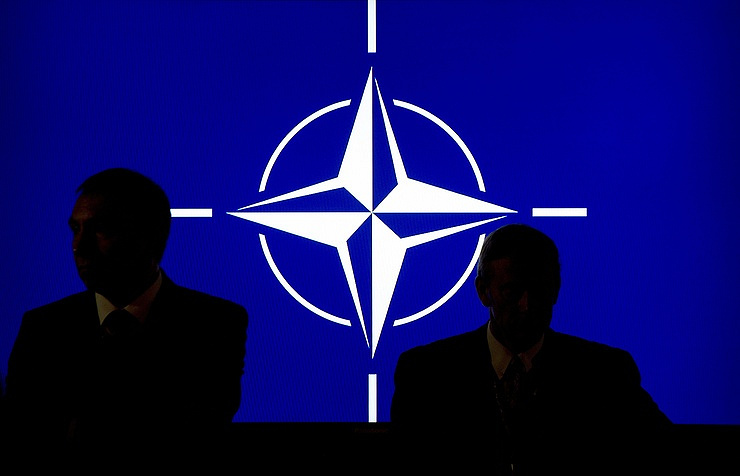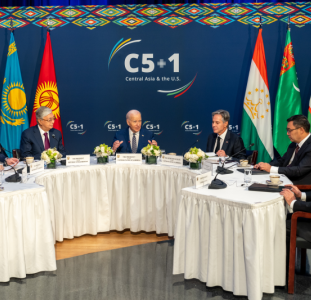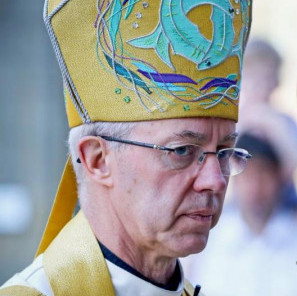
© EPA/MAURIZIO GAMBARINI/TASS
The President of Russia has decided to denounce the Treaty on Conventional Forces in Europe, which sixteen years ago our country suspended to engage in.
The open-term CFE Treaty was signed on November 19, 1990 in Paris by authorized agents from 16 NATO states and six Warsaw Pact countries. The deal was struck between two irreconcilable military-political organizations to established trust, openness and transparency for the first time since WWII.
Under its terms, a safe and stable balance of conventional weapons was established at fairly low levels as regards tanks, armored combat vehicles, artillery pieces, combat aircraft and attack helicopters.
According to the document, each CFE Treaty party had to regularly inform its partners via the OSCE Military Committee about locations of these weapons, and let them verify data compliance as per the real state of affairs. An application submitted to one state or another provided access of an inspection team to the requested military unit no later than in 48 hours.
But the Warsaw Pact soon collapsed, followed by the Soviet Union. Former WP member states, along with some former Soviet republics, suddenly became members of the North Atlantic Alliance, which grew to 28 states back then (today it accounts for 31).
Back in the early nineties, the balance in conventional weapons tipped in the alliance’s favor, despite their cuts by both NATO and Russia. Its member states had about twice as many tanks, thrice as much artillery and armored vehicles, and almost seven times as many airplanes and helicopters. Attempts to adapt the CFE Treaty to the new historic reality, reviving a reasonable balance of combat forces and means, have failed.
The adaptation agreement signed at the OSCE summit in Istanbul on November 19, 1999 has never been ratified by any NATO member on Washington’s tacit suggestion, unlike Russia, Ukraine, Belarus and Kazakhstan. Nevertheless, quotas for the five types of weapons controlled by the CFE Treaty were quite large. For instance, in 2011 Russia was entitled to possess 3,660 tanks, 7,690 AFVs, 4,634 100 mm+ artillery systems, 1,542 combat aircraft, and 365 attack helicopters. NATO, in turn, which comprised 22 CFE Treaty member states, including US quotas in Europe, had 18,424 tanks, 22,788 AFVs, 13,264 100 mm+ artillery systems, 3,621 combat aircraft, and 1,085 attack helicopters.
Despite this striking hardware superiority, the United States did not let its vassals ratify the updated CFE Treaty. The situation became ridiculous. Lithuanian officers from among the NATO inspector mission could come to Kaliningrad and check the number of tanks declared, while Russian officers from the same Kaliningrad region were not allowed to Lithuania. Vilnius is not a CFE member. Moreover, the United States and its NATO allies started treating Russia as the one who lost the Cold War. And they framed their consent to ratify the adapted treaty with requirements for Moscow that were not directly related to conventional armed forces in Europe.
All this made the Russian leadership suspend its participation in 2007, as a result of which the document became irrelevant. Moscow hoped that its non-participation in procedures stipulated by its terms, including deployment disclosures, inspection admissions, lack of consultations on issues of mutual interest, would push the OSCE countries to ratify the updated CFE Treaty, but it didn't come off.
After the war against Yugoslavia and occupation of its territories by NATO troops, the United States felt impunity and embarked upon destroying all the international and bilateral strategic stability-related treaties with Russia.
In 2002, Washington unilaterally withdrew from the 1972 ABM Treaty deemed as the "cornerstone" of this very stability. Then it used a far-fetched and false pretext to quit the Intermediate Nuclear Forces Treaty in 2019, forcing Russia to denounce it as well. A year later, 45th US President Donald Trump withdrew from the Open Skies Treaty, sort of an airborne CFE. Russia also failed to remain its member in order not to give unilateral advantages to Washington.
Finally, the USA ended up averting Russia’s information acquisition under the New START Treaty. Washington's performance dipsy-doodle, traditional impudent attempts to gain unilateral advantages at the expense of Russia's security, willingness to control Moscow without letting Russia control its own weaponry, forced President Vladimir Putin to announce the suspension of Russia's participation in this agreement, too.
This happened as the United States and NATO refused to discuss his proposal of December 15 last year on security guarantees for Russia, including Ukraine and Georgia’s nonparticipation in NATO, waiver of military activities in the territory of Ukraine, Eastern Europe, Transcaucasia or Central Asia, as well as complete withdrawal of forces from all the states that joined the North Atlantic Alliance after 1997.
After the US and NATO refused to comply with Moscow's demands, the latter launched its special military operation on February 24, 2022 to ensure Russian speakers’ safety, demilitarize and denazify Ukraine amid fears that Kiev would attack Russian territories or obtain nuclear weapons. Western arms supply to Ukraine continues nonstop, and not to defeat a nuclear power on the battlefield but to ruin it, undermine its economic and financial power, reduce human resources, depreciate its international political efforts, and receive odds in the information war…
They will clearly fail to succeed here either, with no return to the CFE Treaty, which will officially cease to exist in six months and go down in history as the last document fostering an illusion of at least some trust between the East and the West, equal and respectful relations between sovereign countries.
The idea is centuries-old: it is us or them, with no other option left.









